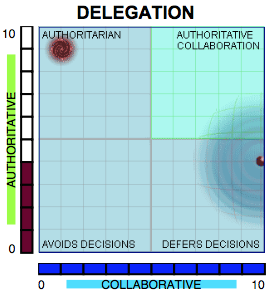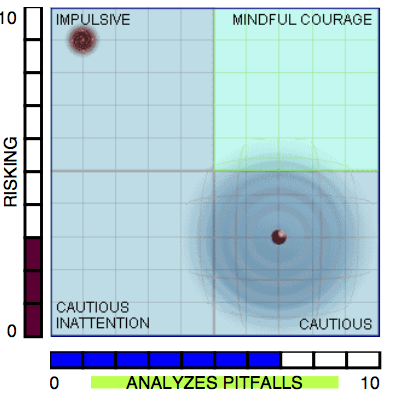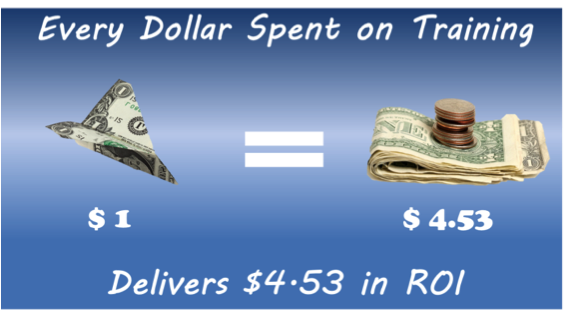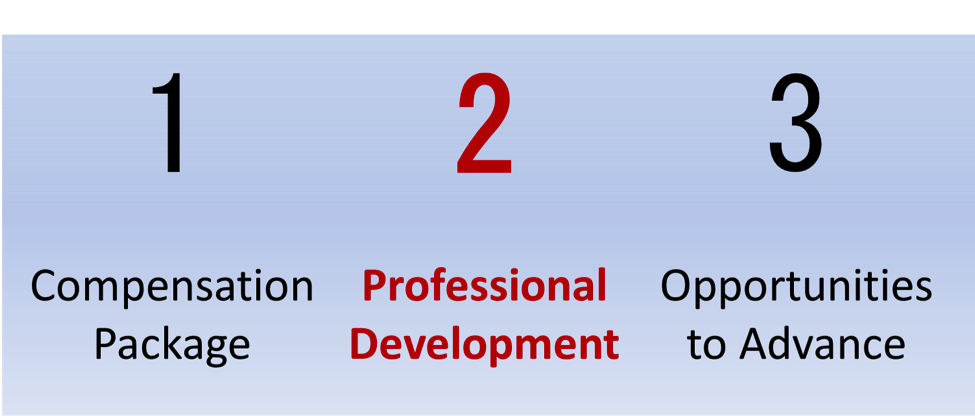
The Performance Difference is a show featuring companies interested in achieving their business goals by building employee growth in specific skills based on the company’s business drivers. Our podcast highlights companies’ success strategies for hiring the right people and building employee growth.We feature a group of professionals focused on recruiting, retaining and improving employees. These include Human Resources professionals, managers of recruiting firms and human development personnel. We’ll discuss which strategies are working (and which aren’t), and trends in the industry. Some of our podcast titles include:
The Essence of Leadership
Civility in the Workplace
Interactive Learning Platforms
Click here to download shows on iTunes. We would love reviews on the podcasts you listen to.
If you would like to be a guest on the show, please click here. Provide your name, company, contact info, and the topic you want to discuss.
 This week is our final in the series of looking at leadership paradoxes. You can click here to view past posts. This week we are focusing specifically on the Strategic Acumen paradox.
This week is our final in the series of looking at leadership paradoxes. You can click here to view past posts. This week we are focusing specifically on the Strategic Acumen paradox.
I recently got a call from a client I worked with previously. The last time we worked together, Tom wanted to start his own business and wanted to find out if he was, indeed, entrepreneur material. It turned out that he had the traits necessary to be a successful entrepreneur, so he’d started his dream company. But now things weren’t going as well as he’d anticipated. He’d had several disappointments, most recently that his company’s efforts to enter a new market had fallen far short of expected returns, and he was on the verge of just abandoning the effort altogether.
We revisited the Harrison Assessment, particularly the Strategic Acumen Paradox. This Paradox is comprised of the Optimistic trait and the Analyze Pitfalls trait. The Optimistic trait is the tendency to believe the future will be positive. The Analyze Pitfalls trait refers to the tendency to examine potential difficulties related to a plan or strategy. An entrepreneur needs a good balance of these traits to make the best decisions for a successful business venture. We were not surprised that Tom scored high in the Optimistic trait, given his willingness to take risks by starting his own company. But we were a little caught off guard by his low score in analyzing pitfalls. He thought he was doing his due diligence, examining all potential roadblocks and taking reasonable risks. The truth is, he was highly influenced by the rose-colored glasses effect.
According to the Harvard Business Review’s article, Delusions of Success: How Optimism Undermines Executives’ Decisions:
Research into human cognition has traced this overoptimism to many sources. One of the most powerful is the tendency of individuals to exaggerate their own talents—to believe they are above average in their endowment of positive traits and abilities…
Executives and entrepreneurs seem to be highly susceptible to these biases. Studies that compare the actual outcomes of capital investment projects, mergers and acquisitions, and market entries with managers’ original expectations for those ventures show a strong tendency toward overoptimism. An analysis of start-up ventures in a wide range of industries found, for example, that more than 80% failed to achieve their market-share target. The studies are backed up by observations of executives. Like other people, business leaders routinely exaggerate their personal abilities, particularly for ambiguous, hard-to-measure traits like managerial skill. Their self-confidence can lead them to assume that they’ll be able to avoid or easily overcome potential problems in executing a project.
Tom was experiencing losses from overestimating his abilities to anticipate possible glitches, which resulted in underestimating risks. This tendency to focus too much on potential benefits snowballed into expensive mistakes during implementation of projects.
I pointed out to Tom that if he simply dismissed pessimistic projections or opinions, he wasn’t making the best use of his critical thinking skills. It’s become fashionable to dismiss unpopular “voice-of-reason” dissenters as mere nay-sayers without vision, but the truth is they should be taken seriously. Their objections need to be explored weighed carefully because they could prevent expensive mistakes and painful recoveries from bad decisions.
I also cautioned Tom to not swing too far in the opposite direction and become too high in the analyze pitfalls trait. That wouldn’t serve his business well, either. He could become caught in the web of decision paralysis which could cause the loss of good opportunities. He might retreat into destructive short-term thinking that would destroy his visionary abilities that enabled him to become an entrepreneur and follow his dreams.
Tom was able to re-evaluate his company’s entry into the new market and learned that it was not the right time for the move. He decided to put it on hold until a more favorable time.
Curious about where you’d fall on the Strategic Acumen Paradox? Contact me at laurie@theperformancedifference.com to schedule a conference and find out.
Welcome to week three of looking at leadership paradoxes! Click here for past articles. This week we are focusing on the Delegation Paradox.
 A manager, Joe, sought my help with improving his team’s performance. During our first consultation, I asked him to tell me about the problems he was having.
A manager, Joe, sought my help with improving his team’s performance. During our first consultation, I asked him to tell me about the problems he was having.
“You know, I just don’t understand it,” he said. “I made sure to select smart, capable people for my team, but they just don’t seem to be able to take direction. We need some team-building help because they compete with each other and don’t work together as a team. Nothing ever gets resolved.”
After further discussion and some work with Harrison Assessments (HA), we discovered that Joe didn’t actually need team building for his group. The real problem was Joe’s decision-making style determined by HA’s Delegation Paradox.
What is the Delegation Paradox?
The Delegation Paradox refers to decision-making styles and centers on two traits, the Authoritative trait and the Collaborative trait.
The Authoritative trait consists of a person’s desire for decision-making authority and the willingness to accept decision-making responsibility. Not only do they accept the duty of making decisions, they also accept accountability for the consequences, both good and bad.
The Collaborative trait refers to the tendency to collaborate with others when making decisions. The best use of this trait promotes strong team engagement, ownership of decisions, and good quality decisions. Successful leaders have a balance between these two traits.
The Downside
People often lean too far toward one trait or the other. We’ve all know people who like to make decisions but aren’t willing to take the  responsibility for the consequences, especially negative ones. They like to take credit but are quick to shift blame. They don’t seek input from others when making decisions. Instead, they have a “my way or the highway” approach to decision-making. These people fall on the Authoritarian side of the Delegation Paradox and tend to make weaker decisions. They fail to inspire engagement and teamwork between team members.
responsibility for the consequences, especially negative ones. They like to take credit but are quick to shift blame. They don’t seek input from others when making decisions. Instead, they have a “my way or the highway” approach to decision-making. These people fall on the Authoritarian side of the Delegation Paradox and tend to make weaker decisions. They fail to inspire engagement and teamwork between team members.
On the other hand, too much of the Collaborative trait can inhibit decision-making, as well. Running around trying to get too much input and overdoing consensus-building results in a lack of accountability and a general lack of direction. Unresolved problems amplify to even bigger problems and indecision negatively affects teamwork. Avoiding or constantly deferring making decisions undermines teams as surely as a too-Authoritarian approach.
The Perfect Balance
The best results come from strong Authoritative and strong Collaborative traits. The equal influence of these two traits encourages team engagement, shared ownership of effective decisions, and eliminates destructive competition that inhibits teamwork.
Joe’s problem was that he was too high in the Authoritative trait and too low in the Collaborative trait. With the best intentions to prevent stress and protect his team, he was making decisions without consulting with them. The unwanted consequences were that he was hindering innovation and creativity. As Joe said, he built a team of smart and capable people. When they felt like they had no input, they became disengaged. Teamwork suffered because they were destructively competitive with each other instead of working together.
Happy Ending
With coaching, Joe has been making more of an effort to get the appropriate input from his team. His decisions are better-informed and the team feels energized, working together better to solve problems. They even received special recognition for an innovative solution to an on-going issue the organization was having in the on-boarding process.
Where do you think you’d fall on the Authoritative-Collaborative spectrum? Email me at laurie@theperformancedifference.com or visit www.theperformancedifference.com to schedule time to talk about how you can improve your decision-making skills.
We are on Week Two of my four week series looking at some of the key leadership paradoxes. Click here to read last week’s blog in case you missed it. This week’s case is about the overly-empathetic HR Director.
Did you pursue a career in Human Resources because you like helping people? Many, maybe even most, HR professionals get that warm, fuzzy feeling from relieving employees’ pain. Empathy is an essential ingredient in a successful HR career. However, empathy can be a double-edged sword.
 I recently worked with a client, Gerri, who was experiencing burnout. She was a great HR Director, but she was experiencing symptoms that were beginning to affect her job performance: fatigue, forgetfulness, irritability, and a “why bother?” attitude towards her work. For someone who had previously been a star performer, these symptoms were frightening. She came to me concerned that she might need to change careers, although that wasn’t what she really wanted to do.
I recently worked with a client, Gerri, who was experiencing burnout. She was a great HR Director, but she was experiencing symptoms that were beginning to affect her job performance: fatigue, forgetfulness, irritability, and a “why bother?” attitude towards her work. For someone who had previously been a star performer, these symptoms were frightening. She came to me concerned that she might need to change careers, although that wasn’t what she really wanted to do.
Through coaching Gerri with Harrison Assessments, we found the sore spot: her Driving Paradox score. The Driving Paradox consists of two opposing traits: Enforcing and Warmth & Empathy.
- Enforcing is the tendency to insist upon following necessary rules.
- Warmth & Empathy refers to the tendency to express positive feelings and affinity towards others.
When they’re in balance, scores are high in both traits and the person enforces necessary rules with compassion. When they’re not, problems follow in short order.
Too Authoritarian
We’ve all encountered someone who has a “rules are rules—period!” attitude. They enforce rules that are outdated and may not even make sense because they believe rules must be followed at all costs. People who score high on Enforcing, but low on Warmth & Empathy, tend to rely on rules to a detrimental degree. They tend to maintain rules that aren’t beneficial to employees, which can cause a lack of trust from employees. If employees don’t trust HR to help them, employee dissatisfaction follows and leads to costly employee turnover. Without Warmth & Empathy, the Enforcing trait undermines teamwork and demotivates employee performance. So you’d rather have some in HR who scores high in Warmth & Empathy, right? Not so fast.
sense because they believe rules must be followed at all costs. People who score high on Enforcing, but low on Warmth & Empathy, tend to rely on rules to a detrimental degree. They tend to maintain rules that aren’t beneficial to employees, which can cause a lack of trust from employees. If employees don’t trust HR to help them, employee dissatisfaction follows and leads to costly employee turnover. Without Warmth & Empathy, the Enforcing trait undermines teamwork and demotivates employee performance. So you’d rather have some in HR who scores high in Warmth & Empathy, right? Not so fast.
Too Empathetic
On the other hand, scoring high in Warmth & Empathy but low in Enforcing has its own set of problems. It can result in poor employee performance due to complacency and decreased accountability, unnecessary mistakes and losses, resentment from other employees, passive resistance, and poor teamwork due to bad behavior. If rules are rarely or inconsistently enforced, employees will not trust HR, resulting in lower engagement. HR people are often compassionate, scoring high in Warmth & Empathy. They need to guard against becoming too emotionally involved in solving employees’ problems and maintain compassionate objectivity. In doing so, they can maintain their value to the company as a strategic asset, win employee trust, and prevent their own burnout.
Case Solved
My client, Gerri, scored high in Warmth & Empathy, but lower than optimal in Enforcing. With coaching, she was able to identify instances where she was exhibiting too much Warmth & Empathy and not applying the rules appropriately. She was able to re-establish professional compassion but not become overly emotionally involved in solving employee issues, alleviating her feelings of burnout. She has returned to the caring and effective performer she had previously been.
Are you feeling the tell-tale signs of burnout? Here’s a quiz on the HR Specialist website you can take to see if you’re burning out.
Visit www.theperformancedifference.com or email me at laurie@theperformancedifference.com to talk about how traits can help you avoid burnout and create success in your career.

Over the next few weeks, I’m going to talk about a series of leadership paradoxes through real-life stories. These paradoxes are based on Dr. Dan Harrison’s work in leadership competencies. If you have done any leadership development, they will be familiar to you. This week we are focusing on being a better strategist.
Recently, I was working with client, an investment banker, who couldn’t understand why he wasn’t more successful with his company’s investments. He was well-trained, experienced, knowledgeable, and competent. He was extremely careful about analyzing risks, but seemed to miss out on opportunities that would have paid off extremely well for the organization and it’s customers.
To get to the bottom of this case, I coached my client using the Harrison Assessment. We pinpointed the issue via his Strategic Paradox score. The Strategic Paradox measures two traits:
- Risking, which is how comfortable you feel with business ventures involving uncertainty
- Analyzing Pitfalls, which is how well you evaluate potential difficulties
 When you score high on both traits, you are willing to take risks as well as able to identify and analyze problems that might arise if you take the risks. Generally speaking, an investment banker carefully analyzes risks to avoid investing in losing opportunities. My client scored high in Analyzing Pitfalls, but low in Risking. Although it would seem that this would be a good score for an investment banker, it was actually causing her to miss out on good, solid investment opportunities. Why would this be the case?
When you score high on both traits, you are willing to take risks as well as able to identify and analyze problems that might arise if you take the risks. Generally speaking, an investment banker carefully analyzes risks to avoid investing in losing opportunities. My client scored high in Analyzing Pitfalls, but low in Risking. Although it would seem that this would be a good score for an investment banker, it was actually causing her to miss out on good, solid investment opportunities. Why would this be the case?
Case Solved: Analysis Paralysis
My client was falling into the trap of focusing too much on what could go wrong with investments. He was over-analyzing risks, thinking of every possible thing that could possibly go wrong, no matter how unlikely it was to actually happen. This resulted in what’s sometimes called “analysis paralysis,” or over-thinking to the point that he missed out on solid investment opportunities. Now he is working on more effective risk analysis and management skills.
I should mention that if he had scored high in Risking and low in Analyzing Pitfalls, he would have had a different set of problems. People who score this way tend to jump the gun and make too many bad decisions because they have the opposite problem—they don’t spend enough time on risk analysis. In fact with my client, we found out that under stress he “flips” to becoming a too risking. Not a good combination for an investment banker!
Where do you think you fall in the Strategic paradox? Are you missing opportunities or taking to too much risk? Think about this the next time you have to make a decision. Paying attention and becoming more aware can help you become a better strategist.
Companies invest a great deal of their budgets on recruiting, developing, and retaining high-performing employees. The costs of a bad hire or promotion are well-documented, with one SHRM (Society for Human Resource Management) study estimating the cost of replacing a salaried employee to be as much as six to nine months’ salary. In addition, too frequently employees don’t live up to expected performance levels, don’t become fully engaged, and move on to other organizations.
 With all the pressure on businesses to not only meet these challenges, but to do it right the first time, it’s understandable that they would seek help. In response, there has been an upswing in the use of assessments to acquire, develop, and promote the best talent.
With all the pressure on businesses to not only meet these challenges, but to do it right the first time, it’s understandable that they would seek help. In response, there has been an upswing in the use of assessments to acquire, develop, and promote the best talent.
When evaluating an assessment to see if it’s right for your organization, be sure that it measures the critical considerations of eligibility AND suitability for a position. Eligibility relates to the individual’s previous experience, educational qualifications and various skills or abilities necessary to perform in the job. Suitability relates to behavioral issues such as preferences, tendencies, attitudes and behavioral competencies necessary to perform well in the job.
Assessing Eligibility
Avoid the pitfall of setting only minimum eligibility requirements. That only helps eliminate people who don’t meet the minimum standards. It does nothing to determine which applicants are best qualified.
Create a list of eligibility factors. Five to ten items usually capture the most-needed requirements. Consider things like:
- What education is required?
- What previous experience is required?
- What skills are required that might not be covered by education or experience?
Once you have the eligibility factors, assign weight to each factor based on how important it is in relation to the other factors. There is software available to make the process of weighting and scoring eligibility factors easy. You can even automate your recruitment process by using online questionnaires that can score the result and provide you with an immediate eligibility score.
Assessing Suitability
Suitability or behavioral factors are more difficult to assess than eligibility factors because no objective and verifiable information is easily available. Subtle balances between factors have significant implications for behavior. To make it even more challenging, applicants tend to withhold or distort information that might keep them from getting a job.
Since suitability/behavioral factors are about 50% of why people succeed or fail in a role, effectively measuring the factors is an essential part of an assessment. Look for an assessment that:
- Measures a large number of suitability factors
- Provides effective lie prevention and detection
- Produces results related to specific jobs
- Offers easy-to-understand, job-specific scoring that guides interpretation
Why Job-Specific?
Asking questions that appear to be irrelevant to the job will probably turn off the most-talented job seekers and result in a lower quality of answers and a loss of credibility for the company. Using assessments that have content that is unrelated to the position destroys credibility and hinders the employment relationship that you are trying to build.
Another critical consideration in selecting an assessment is to use an assessment that fits your purpose. If you are attempting to hire, develop, promote, and retain talent, the assessments must produce reports that are related to the requirements of the job.
In order to predict job success, assessments must be job-specific. Many personality tests use the same set of personality factors for every job. The majority of these factors are likely to be irrelevant to job success for any one job. How can recruiters or line managers know how to use such information when it is not job specific? Furthermore, considering factors that are unrelated to job success can reduce diversity. Diversity is important for having a variety of viewpoints, which leads to making better decisions.
Would you like an opportunity to test your hiring skills? Follow this link to participate in a hiring decision
demonstration: How Can Harrison Help You? You’ll be given a hiring scenario and a pool of candidates to choose from. Find out if your skills are up to the task!
 Last week, a passenger with a valid ticket was forcibly removed from a United Airlines plane. Another passenger video recorded him being dragged, bloodied and dazed. You may have seen the video or heard about the incident. Leaving aside the moral and ethical concerns, how much do you think this customer service debacle cost United? According to this article by David Von Drehle in Time online, United’s stock took a beating to the tune of almost $1.5 billion, just from investors bailing out. That doesn’t even take into consideration the lost business and potential lawsuits. Quite a price to pay for a situation caused by a bad decision that could have been prevented.
Last week, a passenger with a valid ticket was forcibly removed from a United Airlines plane. Another passenger video recorded him being dragged, bloodied and dazed. You may have seen the video or heard about the incident. Leaving aside the moral and ethical concerns, how much do you think this customer service debacle cost United? According to this article by David Von Drehle in Time online, United’s stock took a beating to the tune of almost $1.5 billion, just from investors bailing out. That doesn’t even take into consideration the lost business and potential lawsuits. Quite a price to pay for a situation caused by a bad decision that could have been prevented.
I’ve heard several people wonder out loud, “What were they thinking?” I submit that it might have had more to do with how they think and make decisions. So how can we know what kind of decisions the people we hire are prone to making? Fortunately, tools like Harrison Assessments (HA) can give us a good idea. HA utilizes Paradox Theory to assess behavioral traits. Paradox Theory holds that a trait can be either constructive (positive) or destructive (negative), depending on other complementary traits. For example, when frankness is complemented by diplomacy, it takes the constructive form of being forthright and truthful. However, without the complementary trait of diplomacy, frankness becomes bluntness. While frankness and diplomacy appear to be contradictory, they paradoxically co-exist, complementing each other.
While there is no way to be certain without administering an assessment, I suspect that if I had the results of a Harrison Assessment for the decision-maker, they might look like the following.
Opinions
The Opinion Paradox has two primary traits: Certain and Open/Reflective. Certain is the tendency to feel confident in one’s opinions. Open/Reflective is the tendency to reflect on many different viewpoints. The decision-maker probably would have scored high on the Certain trait and low on Open/Reflective. This person would be convinced that their opinion was correct. They would not seek the opinions of others, and would not pay much attention to any different ideas about how to handle the situation. Even if other employees cautioned against the course of action, their opinions would not have had much influence on the decision-maker.
Strategic
The primary traits for the Strategic Paradox are Risking and Analyzes Pitfalls. Risking indicates the tendency to feel comfortable with business ventures that involve uncertainty. Analyzes Pitfalls refers to the tendency to scrutinize potential difficulties related to a plan or strategy. Available information indicates a decision-maker who would score high on the Impulsive side of the Risking trait and low on the Cautious side of Analyzes Pitfalls. Even the most rudimentary risk assessment would have indicated the potential consequences for such a radical solution could be disastrous, not only as a customer service nightmare, but financially as well.
Driving
Enforcing and Warmth/Empathy are the primary traits for the Driving Paradox. Enforcing means the tendency to insist upon necessary rules being followed. Warmth/Empathy is the tendency to express positive feelings and affinity toward others. I think it’s obvious that the decision-maker would have scored low on the Warmth/Empathy spectrum. Even a tiny amount of empathy for the customer would have prevented the incident. If you’ve been following the story, you know that airlines can, in fact, bump customers in certain situations, up to and including removing them from flights. The decision-maker in this case was intent on enforcing the rules and likely would score high on the Harsh side of the Enforcing scale, but was severely lacking in Warmth/Empathy.
Decision Approach
The primary traits for the Decision Approach Paradoxare Analytical and Intuitive. Analytical is the tendency to logically examine facts and situations, while Intuitive is the tendency to use hunches to help make decisions. To make good decisions, you have to be able to logically analyze problems and use intuition. I believe this decision-maker would have scored very low in both Analytical and Intuitive traits. Even a quick analysis would have revealed the potential for a very public customer service failure, and most people with even moderate amounts of Intuitiveness would have had a hunch or “gut feeling” that this was a bad idea.
Bad decisions made by employees can have catastrophic public relations consequences and devastating financial impact on an organization. The total impact of this traumatic event remains to be seen, but I think it’s safe to say that it will cost United plenty—and not all of it money–before it’s over.
Are you worried that you’ve hired someone who could make a million-dollar mistake at your company? Visit my website at www.theperformancedifference.com or email me at laurie@theperformancedifference.com to discuss how you can avoid putting the wrong person in a position who might do irreparable harm by making epically bad decisions.
 In an HR career, you have three key areas of concern: the business, the employee, and the HR field itself. We usually gravitate toward specializing in the area where we have the most interest. For example, if you chose a career in HR because you want to help people, you might develop a specialty in employee benefits.
In an HR career, you have three key areas of concern: the business, the employee, and the HR field itself. We usually gravitate toward specializing in the area where we have the most interest. For example, if you chose a career in HR because you want to help people, you might develop a specialty in employee benefits.
HR professionals often experience conflicting priorities over the course of a day or even within the same hour. According to Anne Sandberg in HR Bureaucrats, Bleeding Hearts and Nerds, HR professionals face three critical questions when making decisions:
- Does it make business sense?
- Is it right?
- Is it theoretically sound?
The first question addresses the interests of the organization. These HR career decisions are business-centered – protect the business from litigation, improve business effectiveness and profits, filling job openings, and processing paperwork.
In the second question, “right” means respectful of employees, free of discrimination and favoritism, an impartial and safe environment. It is employee-centered and revolves around the fair and compassionate treatment of everyone.
“Theoretically sound” means that it aligns with the knowledge we have about the science of human behavior in the workplace. There is a wealth of knowledge and research around theories and methodologies in the HR field.
Competing Priorities
Of course, these areas overlap and often compete for our attention. I’d be very surprised if, over the course of your HR career, you never have a leader who focuses only on the administrative areas of HR, such as time-to-hire metrics, turnover rates, payroll, benefits, insurance, worker’s compensation, etc.
Then there’s the eternal HR career conflict – company vs. employees. Is HR’s goal to protect the organization or support its employees? In truth, it’s both. According to Liz Ryan in the Forbes article Whose Side Is HR On?, we need to rise above the seeming conflict and realize there are no sides. It’s mutually beneficial for the business and the employees to work together to achieve success.
Ryan asserts that you build good energy at work by creating a high-trust environment for employees by showing that the organization cares about its employees through both words and actions of the organization’s leadership. HR is crucial to achieving the fair and flexible policies that make an organization healthy.
“HR’s role is to make an organization a fantastic place to work. You will never worry about lawsuits or disputes with employees if you build a trusting culture and treat employees the way you want to be treated.” Liz Ryan article
In addition to the “company vs. employees” tug-of-war, we have our own internal preferences trying to get our attention. Some people favor studying and working with the principles, theories, and methodologies in HR field. If you like to immerse yourself in philosophy and research, you might be tempted to focus more on theory than on decisions that make business sense and/or support employees.
Finding the Balance
The first step to achieving greater balance to be more successful in our HR careers is to recognize our internal preferences. Then we need to be willing to recognize the value of all three areas: business, employees, and the HR field. We tend to over-value the viewpoint that best fits our interests. Finally, ask yourself the three critical questions and make sure your solutions address each area when you make decisions. Balancing our perspective will lead to a more successful HR career.
Want to know more about which area of interest is the best fit for you? Visit my website at www.theperformancedifference.com or email me at laurie@theperformancedifference.com to discuss how you can find out about the best fit for you and the traits you need to succeed.
 Retaining employees is, or should be, on everyone’s mind. After you’ve done the hard work of finding and selecting good candidates for your company, you want to keep them. It’s expensive and time-consuming to replace employees. A recent Society of Human Resource Management (SHRM) study predicts that every time a business replaces a salaried employee, it costs six to nine months’ salary, on average. For a manager making $40,000 per year, that’s $20,000 to $30,000 in recruiting and training expenses.
Retaining employees is, or should be, on everyone’s mind. After you’ve done the hard work of finding and selecting good candidates for your company, you want to keep them. It’s expensive and time-consuming to replace employees. A recent Society of Human Resource Management (SHRM) study predicts that every time a business replaces a salaried employee, it costs six to nine months’ salary, on average. For a manager making $40,000 per year, that’s $20,000 to $30,000 in recruiting and training expenses.
Costs vary based on position. For example, it might cost 16% of the annual salary for high-turnover, low-paying jobs (earning under $30,000 a year). That means the cost to replace a $10/hour employee could be over $3,300. The expenses include advertising the position, screening applications, hours spent preparing for and interviewing selected applicants, screenings for the person who gets an offer such as drug tests and background checks—all that adds up quickly. It only makes fiscal sense to retain employees that you hire.
Last week I talked about talent development being the second most important factor in attracting employees, especially millennials. It’s also a powerful retention tool.
 Studies have shown that for every dollar spent on training and employee development, there’s a return on investment (ROI) of four dollars fifty-three cents to the company. That’s a whopping 354% ROI! I’m sure we wish all our investments paid off at this rate. Even so, we have to be cost-conscious when planning development and training events. We need to put our efforts where we’ll see the best return for the most cost-effective investment. The first step in that process is to develop a learning culture.
Studies have shown that for every dollar spent on training and employee development, there’s a return on investment (ROI) of four dollars fifty-three cents to the company. That’s a whopping 354% ROI! I’m sure we wish all our investments paid off at this rate. Even so, we have to be cost-conscious when planning development and training events. We need to put our efforts where we’ll see the best return for the most cost-effective investment. The first step in that process is to develop a learning culture.
Learning Culture
A learning culture is a powerful asset to retain employees over the course of their careers. It has five characteristics: learner-centered, continuous, decentralized, shared, and all about results.
Learner-centered: In a learning culture, the responsibility for learning resides with each employee and each team—it’s learner-centered. Employees are expected to seek out the knowledge and skills they need, when and where they need them.
Continuous. A learning culture recognizes that learning happens all the time. Yes, at events and conferences, but also on the job, through coaches and mentors, from smartphones and tablets at the moment it’s needed—how many of you have searched on your phone or tablet for how to do something right when you need it? Learning happens socially, in casual and unexpected settings—like talking to other parents at extracurricular activity practice–and from trial and error.
Decentralized. In a learning culture, everyone contributes. The whole organization is engaged in facilitating and supporting learning so the learning is decentralized. The training team and/or HR guides and coaches development to make sure it’s effective.
Shared. In a learning culture, everyone shares knowledge freely. Everyone learns from the hits and misses across the board which creates a more sustainable and adaptable organization.
All about results. In a learning culture, what matters is the knowledge and skills that employees acquire and how they’re applied in the workplace. What is the impact on achieving the organization’s strategic goals?
The next step to achieving the best training and development ROI is to provide training on what employees need to know. You won’t retain employees who are frustrated because they aren’t performing as well as they could if they received relevant training. Target role-specific knowledge and skills for current needs and provide learning opportunities for future roles. For example, let’s say you just hired Brenda in a sales role. At first, she’ll need onboarding and training for sales in your company. As she grows proficient in her sales role, she may think about moving into management in the future. Then she’ll need management skills, including interviewing and hiring people. In order to keep Sarah, your organization needs to provide development opportunities that will help her now and in the future.
There’s another important component to the equation. Although Sarah thinks she wants to move into management, would she really be suited for the role? You have to consider what’s best for your organization as well as what’s good for Sarah. Even if she acquires all the skills, does she have the traits that would make her successful?
Some role-specific skills and traits are obvious, but others are more subtle. Fortunately, there are tools that you can use that help identify the skills and traits needed to be successful in a role, such as Harrison Assessments. Employees who experience job success tend to perform better and be happier with their jobs. It’s easier to retain employees who are happy.
If you follow these steps, you’ll be on the path to cost-saving employee retention and maximizing your talent development ROI.
Visit my website, www.theperformancedifference.com, or email me at laurie@theperformancedifference.com, to learn more about how to retain and develop the best employees for your company.

How many times have you heard someone say they can’t find good hires? Companies across all industries are finding that attracting and retaining top talent is a struggle.
Some believe that talent is scarce, while others believe that talent acquisitions strategies are the issue. Whatever the shortcoming may be in finding talent, training could be the solution. Creating a work atmosphere in which talented people can continue to grow and learn could be the key to attracting the talent you need.
In the past, employees valued opportunity, compensation, and security. Things have changed. People, especially those starting out, are looking for growth potential and a company that will invest in their professional development. Today’s young workers, sometimes called “millennials,” want more than a paycheck. They are geared toward seeking employment that allows them to learn new skills. You are more likely to attract and keep good employees if you can offer development opportunities.
A lot of research has gone into recruiting and hiring millennials. According to Lydia Abbott’s LinkedIn Talent Blog titled, “Your Guide to Hiring Millennials,” you should highlight these three factors to get a millennial to accept a job:

Professional development is Number 2—the second most important thing. Millennials are overwhelmingly attracted to companies they think are invested in their personal growth and career development. They’ve seen that things have changed from the days when a person worked an entire career for one company. They want to know that they’ll have the opportunity to develop a strong set of competencies and transferrable skills that will be useful now AND later on, as their careers develop.
However, I believe this applies to any age group. Would you really want an employee who wasn’t interested in learning new skills and staying up-to-date with advancements in your field?
According to SHRM, a significant number of new hires leave a job in the first six months because of poor onboarding and lack of training. Most people want to feel competent and that they are doing a good job. Businesses need to deliver quality products and services each and every time to be competitive. Do you think untrained employees will hit the mark consistently?
To attract and retain top talent, create a learning culture where people can develop and grow professionally. Training programs are a good start, but the rapid pace of change in today’s workplace dictates that you find ways to help people learn faster in their daily work environments. One way to do this is to focus on designing work environments that help employees improve their performance on a daily basis. This will keep your business dynamic and keep employees in a growth mindset. Then find ways to promote information sharing between employees. Training doesn’t have to be expensive, formal programs and conferences. There are several low-cost, high-benefit methods such as:
- On-the-job training where employees can learn from coworkers and associates
- Lunch-and-Learn sessions with a mix of employees and outside speakers presenting
- Online forums, live chats, and webinars
- Corporate intranet
- Learning partners/cross-training
- Coaching and mentoring
- Books, both paper and electronic
If you offer opportunities for employee growth and development, you’ll have a recruiting advantage to attract the right people. Next week, I’ll talk about how to keep them once you’ve hired them.
Visit my website, www.theperformancedifference.com, or email me at laurie@theperformancedifference.com, to learn more about how to recruit and develop the best employees for your company.

In her article, “The New Roles of the Human Resources Professional,” Susan M. Heathfield stated:
Traditionally, the role of the Human Resource (HR) professional in many organizations has been to serve as the systematizing, policing arm of executive management. Their role was more closely aligned with personnel and administration functions that were viewed by the organization as paperwork.
When you consider that the initial HR function, in many companies, comes out of the administration or finance department because of hiring employees, paying employees, and dealing with benefits were the organization’s first HR needs, this is not surprising.
Today’s HR professionals face roles that are evolving at a breakneck pace. To demonstrate value to executive leadership, HR must align with forward thinking practices that adapt to the changing needs of their organization and contribute to company profitability. They must connect with and support employee needs. And they must do this while contending with the changing roles in their own careers.
HR career paths are shifting away from personnel-and-paperwork-administration roles to those of strategic partner, employee advocate, and change mentor.
As a strategic partner, HR professionals contribute to the development and accomplishment of organization-wide business plan and objectives. HR staff members have to think like business people, know finance and accounting, and be responsible for cost reductions and the measurement of all HR programs and processes.
As an employee advocate, HR fosters effective methods of goal setting, communication and empowerment through responsibility. HR helps establish the organizational culture and climate in which employees have the ability, desire, and commitment to serve customers well. The HR manager provides overall talent management strategies, employee development opportunities, employee assistance programs, gain sharing and profit-sharing strategies, organization development interventions, due process approaches to employee complaints and problem-solving, and regularly scheduled communication opportunities.
Crucial change management skills include knowledge about and the ability to successfully execute change strategies. Being able to link change to the strategic needs of the organization minimizes employee dissatisfaction and resistance to change.
Several societal megatrends currently exert influence on HR roles. These trends contribute to the changing HR career path.
What Are Societal Megatrends?
Megatrends differ from trends. They are large social, economic, political, environmental, or technological changes. Once in place, megatrends influence a wide range of activities, processes and perceptions, both in government and in society, possibly for decades. They are the underlying forces that drive trends. Here’s an example of the relationship between megatrends and trends:
Megatrend: Aging population
Trends: Workforce gaps when Baby Boomers retire, buying habits, elder care, and health care
Top Three Societal Megatrends
One of the top three societal megatrends that face HR professionals is closely related to the aging population: diverse generations in the workforce. Soon there will be five generations in the workforce: Traditionalists, Baby Boomers, Generation X, Millennials, and Generation 2020. HR pros will need skills in facilitating communication, encouraging teamwork, and conflict resolution to unite the differing work values and styles between the generations now working side by side.
Another megatrend is the increasingly borderless workforce. HR pros will need to meet the challenges of employees, both full-time and contingent, who work across businesses and boundaries. Challenges include resource management – building on-going relationships with resources, onboarding and workforce training for non-traditional workers, and risk management to thoroughly vet resources.
The third top megatrend is driven partially by the borderless workforce and younger workers’ technology habits: technology challenges, especially changes in IT security and access. Issues include protecting intellectual property and proprietary company information, protecting confidential employee information, and secure access from multiple sources, especially mobile devices and social media. Security from hacking and cyber-crime concerns will continue to grow and transform with workforce and technology changes.
Are You Ready?
Do you think you’re prepared to move up the HR career ladder? Every step requires a shift in responsibilities and focus. You’ll need to adjust your thinking, behaviors, relationships both old and new, and modify your perspective. As if learning new management and technical skills isn’t enough, you’ll also have to maintain relationships and develop new ones at each new crossroad of your career.
adjust your thinking, behaviors, relationships both old and new, and modify your perspective. As if learning new management and technical skills isn’t enough, you’ll also have to maintain relationships and develop new ones at each new crossroad of your career.
We all have traits that we use at work. Some are good, energizing us and helping us succeed. We usually like using those traits and seek out opportunities to do so. Then there are traits that we’re not as comfortable with. Maybe we haven’t developed them yet. We generally avoid situations where we would use them. We may need to work on making sure we develop traits to avoid imbalances that could negatively affect the way we work and how others view us.
For example, two opposing communication traits are being Frank and being Diplomatic. Being Frank could make you seem to be to the point and decisive, which can be good. However, you may also be seen as someone who is a bully, very controlling, and doesn’t listen to others. That’s not what you want! So then you may think being Diplomatic is the way to be a really good communicator. There are some good aspects in being Diplomatic. You can be seen as someone who listens and is compassionate. However, if you rank extremely high in the Diplomatic trait, you could be seen as someone who is wishy-washy, can’t make decisions, and is too much of a people pleaser. The reality is we need both Frank and Diplomatic traits in order to strike a balance so we can effectively do our jobs.
If you’re curious about what other traits you may need to balance so you can meet the challenges of your HR career, make plans to attend the SHRM Atlanta SOAHR conference. I will be co-presenting with Mike Mattingly, Sr. VP of HR at Marlin Leasing. Our topic is Upping Your HR Game: Leadership Paradoxes to Growth Your Strengths. Click here to learn more.
Email me at laurie@theperformancedifference.com, to learn how to find out which traits you have and which ones you need to develop to have a successful HR career.
Recent Posts
Recent Podcasts
- 10 Mar 2014Organizational Creativity
- 24 Feb 2014Interactive Learning Platforms
- 24 Feb 2014Civility in the Workplace
- 24 Feb 2014The Essence of Leadership
Contact Details
- 3463 Chastain Glen Lane
Marietta, GA 30066 - 678-761-3550
- info@theperformancedifference.com
- Contact Form
